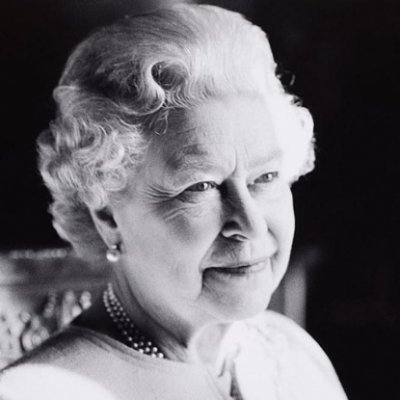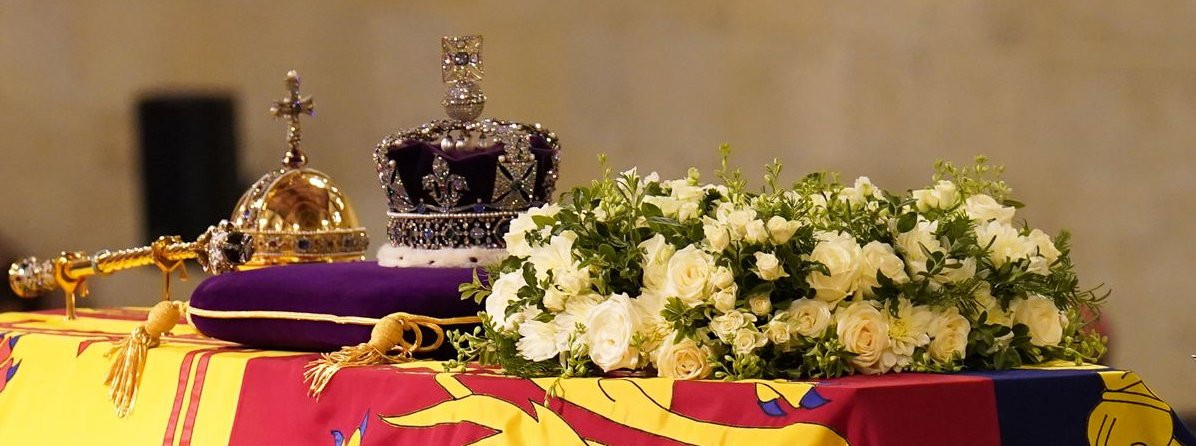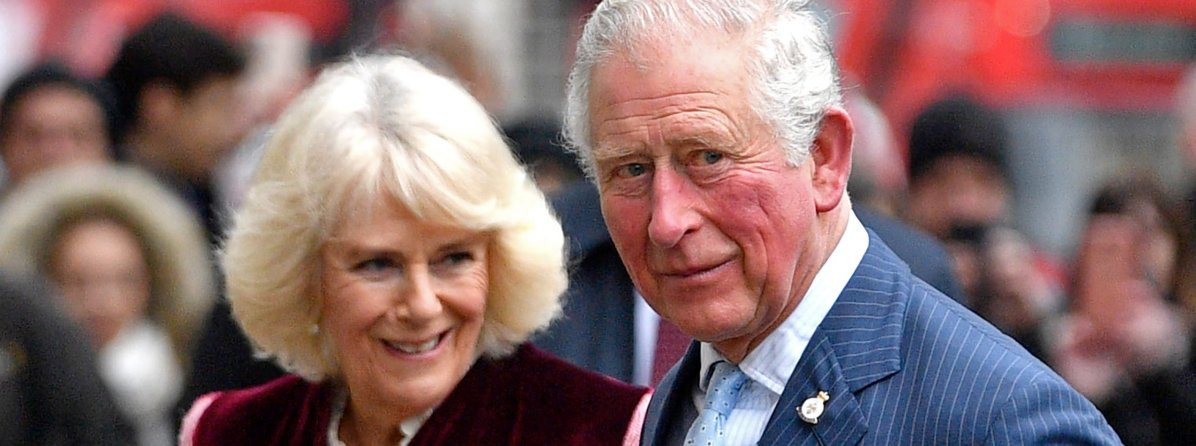
The Queen's Funeral
In a world in which news, "reality television," and drama are blurred as they all come through the same screens, the "soap opera" that is the House of Windsor combined with the splendour of the pageantry of an old Imperial Monarchy continues to fascinate much of the world
John Winterson Richards on a momentous occasion in history - The Queen's Funeral
It would be distasteful to review the State Funeral of Queen Elizabeth II as if it was just another show. It marked the passing of a much loved woman who meant a great deal to her family and close friends, as well as to the millions and millions of others to whom she had always been an important part of the background of our lives, possibly the most recognisable face in the world. As such it had an immense psychological effect, even on many who are politically critical of the Monarchy. The ceremonies were just the outward manifestation of a general feeling that something fundamental had just changed.
At the same time, it would be disingenuous to deny that a show is what it was, a well planned, very expensive, and very successful television show with high production values and a cast of thousands, as it was always intended to be.
Preparations began decades ago. The whole thing was organised with military precision - literally, because many of those involved were serving officers or had been, usually in the Guards. The Queen herself was involved very closely in the planning, and so were representatives of the television Industry, especially the BBC. Previous Royal Funerals, and the televised State Funeral of Sir Winston Churchill provided a basic template. The "Ceremonial Funerals" - one down on a full State Funeral - of Princess Diana, the Queen Mother, and, to an extent, because it was deliberately low key, the Duke of Edinburgh, were all in effect dress rehearsals for this one. The plans were reviewed constantly and kept up to date.
All this was done so that everyone involved could be reassured that, when the time came, they would only have to open a file, marked "Operation London Bridge," and follow its recommendations step by step. One suspects that the name was chosen so that someone could announce dramatically "London Bridge is down!" That said, there is no record of anyone actually doing so. In the event it was necessary to open two files, because an additional plan, "Operation Unicorn" had been prepared in case the Queen was in Scotland when she passed, as turned out to be the case. This may not have been accidental: not only was the Queen very fond of Balmoral, she was also well aware of the political advantage of having Scotland play a major role. Given her sense of duty, it is by no means unimaginable that, as she felt herself in irreversible decline, she made the deliberate choice to go there for the final act.
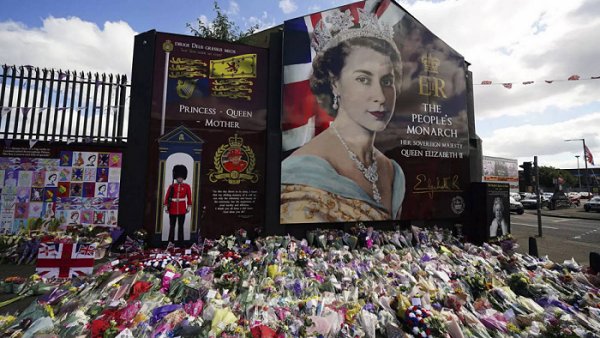
If that sounds a bit theatrical, it should be remembered that Queen Elizabeth always understood the theatrical nature of Monarchy. She also understood that television is the great theatrical medium of the modern age. As was pointed out in our discussion of the televising of her Platinum Jubilee, everything that the Monarchy did throughout her reign, starting with her televised Coronation, was planned with television coverage in mind.
That was true to the end, including her plans for her own State Funeral. It seems appropriate that it was the first fully televised State Funeral of a British Sovereign. That is itself a fitting epitaph for the most televisual of Monarchs. The choreography, the selection of camera locations, and the lighting were all worked out very carefully with a view to the highlights that would be shown on the news all around the world by people who knew exactly what they were doing.
Their efforts were rewarded with enormous success. Images of the Funeral dominated the global media for days. It gave the United Kingdom "free" publicity a marketing budget of hundreds of millions could never have bought.
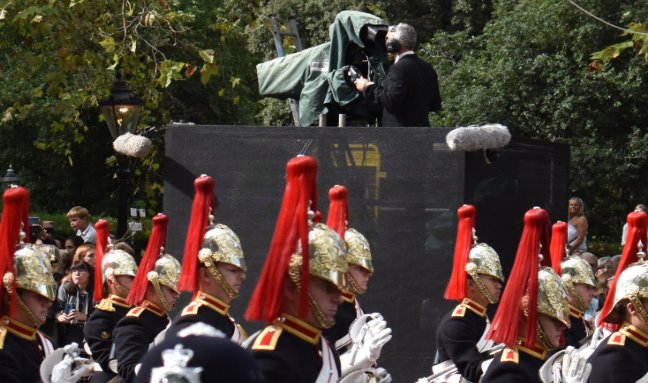
Some media reports at the time suggested that the Funeral might be the most watched televised event in world history with up to 4,000,000,000 viewers. While it is difficult to get accurate figures, that is almost certainly not the case, but it is still probably up there near the top of the list. It was in the All Time Top Ten in the United Kingdom, even if those who viewed it on the screens of telephones and other "mobile" devices are excluded. Since these now make up a considerable proportion of viewers, it is not impossible that the Queen's Funeral was actually the most watched event in British television history.
According to the official ratings, that title still belongs to another Royal Funeral, Princess Diana's, even if it must be stressed that changed viewing habits make a direct comparison impossible. That Diana still holds the record might be viewed by some as her final victory over the Royal Establishment, but it is only to be expected that an attractive young woman is always going to be a bigger draw than even the most respected elderly lady, and Lady Diana Spencer would have lived and died in obscurity but for her connection with the Royal brand.
Both Funerals were therefore major television triumphs for that brand, part of a long chain of ratings triumphs that also included the various Jubilees, the big Royal Weddings, and the Investiture of the Prince of Wales. It would be a mistake to imagine that the Royal Household view this with aristocratic ambivalence on the assumption that television is for the servants. It is all part of a deliberate media strategy that is of immense commercial and political importance to the United Kingdom.
It is not just about advertising Britain as a tourism destination. When the future Queen was born - no one knowing then that she was a future Queen - the British Empire was at its height, nominally at least the greatest Empire the world has ever seen, but by the time of her passing, it had been reduced to a few islands. As a result, her long life and reign coincided with the United Kingdom toppling down the global rankings of military and economic powers, giving the country something of an identity crisis. One of Queen Elizabeth's great strengths was her ability to project herself as a living symbol of stability in a rapidly changing and confusing world.
This helped the United Kingdom to continue to "punch above its weight" as Lord Hurd memorably put it. Diplomatically Britain still has disproportionate influence for a country with only about 1% of the global population. For purely historical reasons it still has a permanent seat on the United Nations Security Council, and even as it slips down the Top Tens of military and economic powers the point is that it is still in those Top Tens.
The United Kingdom is also still very strong in terms of cultural influence, which contributes tangibly to what diplomats call "soft power." If Britain cannot compete with, say, Germany in terms of Classical music, or France in terms of cuisine, or Italy in terms of opera and the visual arts, it does have a number of historical assets, the greatest of which is the English language. English is the language of the internet and therefore of the world, or at least the generally accepted second language of the world. This means, among other things, that the United Kingdom in general, and its film and television production business in particular, is both a branch and a close competitor of the only current cultural "superpower," the United States.
How much it is a branch office - or, to be brutally accurate, a back room production facility and minor subsidiary market - and how much it is a serious competitor depends on the United Kingdom's ability to assert a separate identity. Without it, Britain would be overshadowed completely by American cultural images, as is already the case in many respects.
Britain survives culturally because it possesses an extraordinary number of truly global brands: the literary franchises of Shakespeare, Scott, Dickens, Conan Doyle, Christie, Fleming, Tolkien, and Rowling, as well as the older traditions of King Arthur and Robin Hood; the legacy of the fact that many worldwide Protestant denominations were founded in Britain and the fact that many global sports were first organised here; the remains of the "British Invasion" of popular music, led by the Beatles and the Rolling Stones, in the Sixties and Seventies; and, of course, the oldest and biggest British brand of them all, the Monarchy.
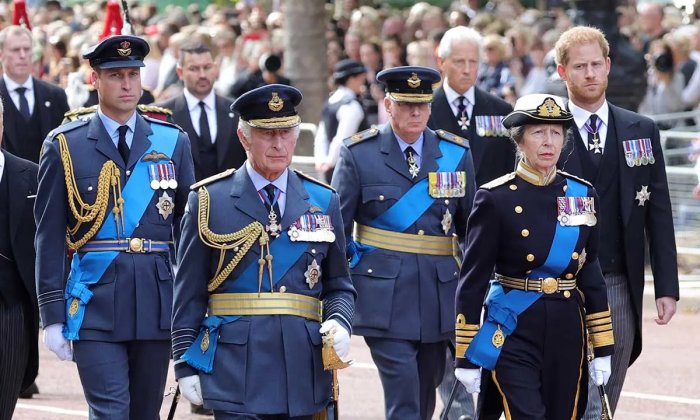
The Queen's Funeral was therefore a deliberate assertion of the continuing strength of that brand. It was the United Kingdom saying that, even if it was not the military and economic superpower it once was, it remains a major cultural power. It was also a statement that, in spite of the coronavirus, the inflation crisis, the impact of the Russo-Ukrainian War and subsequent sanctions, and the economic effects of the prolonged uncertainty over "Brexit" and the 2008 Crash, Britain is visibly open for business. Apart from anything else, it was a good opportunity to show London full of people not wearing masks.
In a world in which news, "reality television," and drama are blurred as they all come through the same screens, the "soap opera" that is the House of Windsor combined with the splendour of the pageantry of an old Imperial Monarchy continues to fascinate much of the world. Even the affairs, the scandals, and the Duke and Duchess of Sussex turning themselves into the new Kardashians play a useful part. The British Monarchy, more than every other ruling family outside America, is never far from the global news cycle. In the United States itself, a country founded on an explicit repudiation of the British Crown, there is an obvious subconscious desire for a substitute, manifested in an obsession with celebrity that tries to make certain actors, athletes, singers, and politicians the equivalent of Royalty.
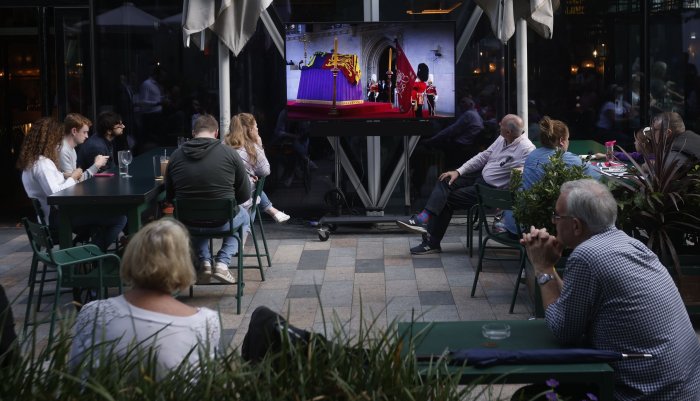
It is therefore no surprise that over eleven million Americans tuned in to watch the funeral of the woman whose rejection as their Sovereign they celebrate every year on the Fourth of July. After all, whenever pollsters put the question, she almost invariably enjoyed higher approval ratings among Americans than whoever happened to be their own President at that point.
What they, and everyone else saw, was the fruits of years of planning. The late Peter Sissons has described how the BBC held rehearsals for announcing the passing of "Category A Royal" every six months or so and had pre-recorded material locked in a special cabinet ready for use.
Sissons himself had been criticised for wearing a burgundy tie rather than black when announcing the passing of the Queen Mother over twenty years earlier. The BBC seemed determined not to repeat the solecism - so much so that this time Huw Edwards was criticised for being seen wearing a black tie before making the official announcement. Yet everyone who understood how these things work knew already. The low key reporting of members of the Royal Family arriving at Balmoral was a clear signal of what was happening.
When it came, the official announcement was a masterpiece of old school British formality - Edwards' calm reading of a formula that could have been written seventy years ago, without a single additional word or any hint of personal emotion, followed by the National Anthem being played over an official portrait of the Late Queen and her name on a black background.
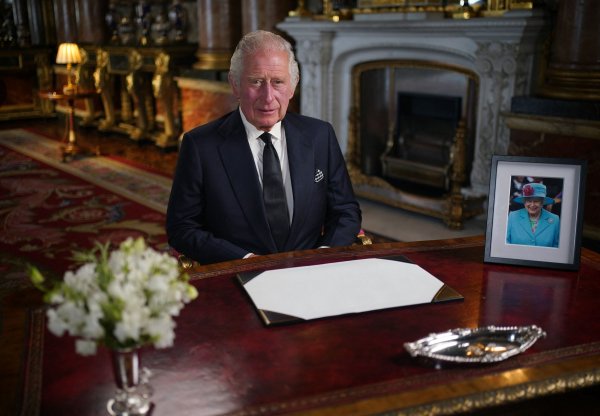
This effectively set the theme for the next few days, which was continuity through tradition. Almost immediately, the new King, Charles III, addressed the nation, as his mother had done so often: it seemed odd to have a Royal broadcast without her, but it made the point that the Monarchy endured even with the Monarch gone. Without anyone saying so explicitly, it was television conveying subtly what in earlier times had been explicit in the traditional shout of "The Queen is dead, long live the King!"
That point was underlined as the King attended the Accession Council, a meeting of the Privy Council where certain fairly mundane legal formalities were transacted. Yet, even as continuity was being emphasised, there was innovation, showing once again how central television is to the Royal Family's media strategy: for the first time ever the Accession Council was televised.
This was followed by the televised Proclamation of the new King in all four nations of the United Kingdom, a delightfully Medieval hangover, but modern in that Wales and Northern Ireland were included despite not being traditional Kingdoms in their own right like England and Scotland. Over the next few days, between the Accession Council and the Funeral, the King then visited all four nations in person. He was under no obligation to do so, but it was no bad thing to show his face all over his new Kingdom and stamp his nominal authority on it. That a man in his seventies was so active and energetic also made a good impression.
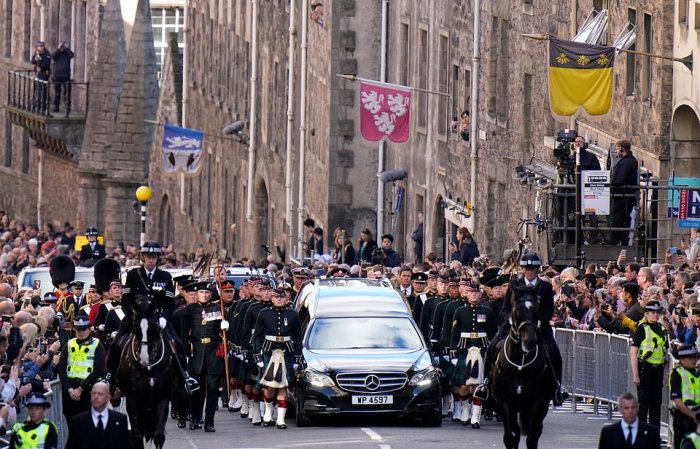
Meanwhile, the Queen's body was on something of a tour of its own. Its convenient presence in Scotland allowed the plans made under "Operation Unicorn" to be put into effect. After a separate Scottish procession, Service of Thanksgiving, and lying at rest, it was flown back to London for the larger scale English equivalents.
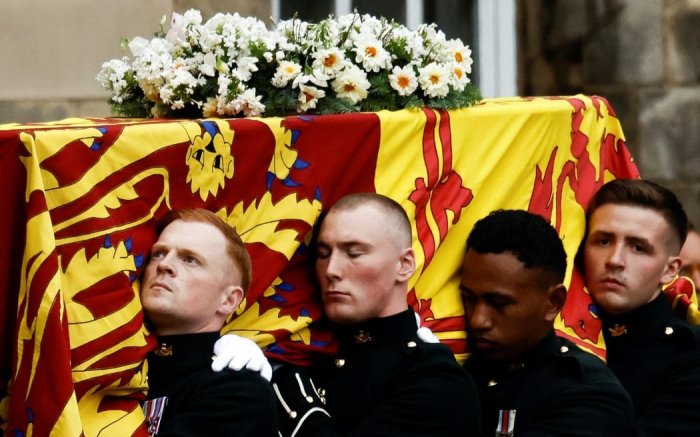
It was carried in procession to Westminster Hall in what was itself something of a rehearsal for a far grander procession on the day of the Funeral. It was noticeable that the BBC commentary on this preliminary procession contained some errors that would not have been allowed in Tom Fleming's day. For example, the King was described as wearing the uniform of a Field Marshal when he was clearly dressed as a Marshal of the Royal Air Force.
At Westminster Hall, the Queen lay in state for several days while the King continued his tour and final preparations were made for the Funeral. Over a quarter of a million people filed past her coffin. Those waiting to do so formed what became known simply as "The Queue," capital T, capital Q, or, a little more satirically, "The Elizabeth Line." The Queue took on something of a life of its own and even became a sort of celebrity in its own right. At its greatest it was over ten miles long and some people had to spend twenty five hours in it.
The lying in state itself produced some of the most memorable images of the week, thanks in part to another innovation: the 21st Century being the 21st Century someone had the bright idea of "live streaming" people paying their respects as they walked past the coffin.
"Do we really need a 24-hour livestream of the Queen lying in state?" asked The Independent. Well, we may not have known it, but it seems we did. The stream had over seven million views in its 48 hours and the number watching at any one time was frequently in five figures. This viewership sometimes jumped considerably, for example during the "Vigil of the Princes" when the Queen's children joined the ceremonial guard of honour watching over the coffin.
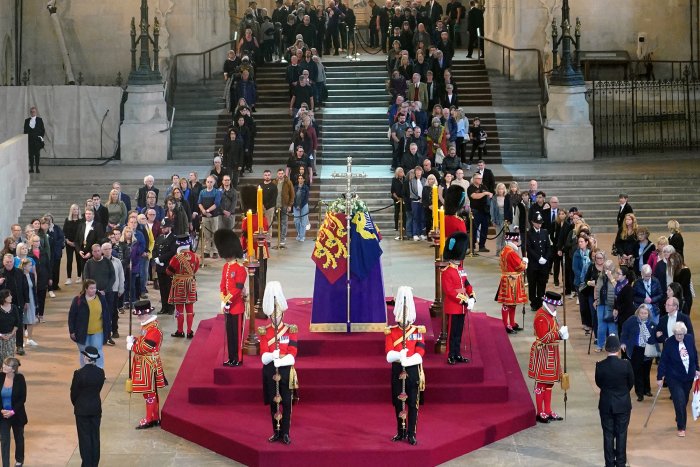
Yet it was the faces of the "ordinary" people filing past that had the greatest emotional impact. Rarely has such a genuine cross section of the British public been caught on film. There were representatives of all races, religions, age groups, and, judging by their clothing, social classes, if there is still such a thing. Some bowed as they passed, quite a few crossed themselves, and old soldiers wearing their berets and medals saluted smartly. Most did not know how to react. Youngsters often tried to look unimpressed while older people seemed genuinely sad. Others just looked a bit stunned - probably exhausted after up to a day in The Queue.
After that the State Funeral itself seemed literally a formality. The Church Service itself was not especially memorable - there was no "Candle in the Wind" or Earl Spencer style passive aggressive eulogy. In the absence of drama, the closest there was to comedy was the President of the United States having to sit near the back after he arrived late because he insisted on travelling in his own motorcade rather than taking the official courtesy bus provided for all the other Heads of State.
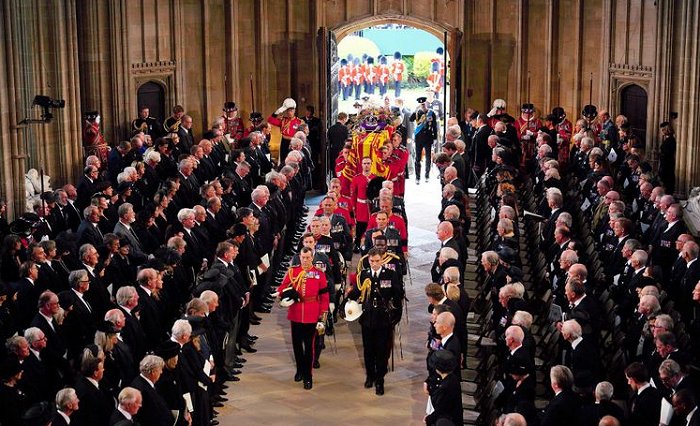
The choice of Westminster Abbey as the venue did not really pay off. It was the traditional burial place of Monarchs up to and including George II in 1760. The down to earth George III preferred the more intimate St George's Chapel in Windsor Castle and subsequent Monarchs followed his example, with the exception of Queen Victoria who was buried in a special mausoleum at Frogmore next to her beloved Prince Consort Albert. Elizabeth II also wanted to be buried at Windsor, where her own beloved husband had been buried the year before, but, as always, she was alert to the demands of television and saw the need for something more spectacular.
So the compromise was that she would be buried at Windsor after a Committal ceremony there but the actual Funeral Service would be held at Westminster Abbey. Saint Paul's Cathedral might have been a better choice. Although the Abbey is a suitably huge and very impressive building, the fact that Sir Christopher Wren was able to implement a single unified plan for the whole, combined with his particular mastery of space and light, mean St Paul's looks better on television. However, while St Paul's is traditionally the Civic Cathedral of London, the Abbey, which has strong historical links with the Monarchy, has always been, in effect, the Royal Cathedral and Westminster the Royal Family's home ground.
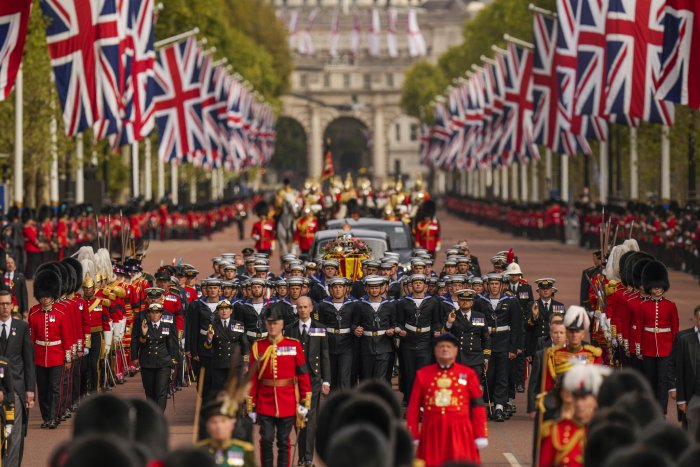
The real ceremonial highlight of the day was the subsequent procession up the Mall, an imposing column of 3,000 British military in full dress, led by four lancers from the Royal Canadian Mounted Police as a polite reminder that Elizabeth II was Queen of far more than the United Kingdom of Great Britain and Northern Ireland - it was probably impossible to get more at such short notice but expect a much greater Commonwealth presence to make the point at King Charles' Coronation. This procession gave the world news media the images they wanted for their reports and for the front pages next day.
The smaller procession up the Long Walk to Windsor Castle presented a definite contrast. It seemed a bit odd to see so many dignitaries in ceremonial dress walking along what looked in places like a deserted country road. It was one of the few lapses in attention to the optics during the proceedings.
This final procession did, however, provide the opportunity for the closest the day had to a human touch - even if it came from animals: Emma, one of the Queen's ponies, was standing at the roadside as the procession passed, and two of her famous corgis, Muick and Sandy, were waiting for her as she "came home" for the last time. It was a welcome reminder of what an animal lover she was, and also of a more important fact that might otherwise have been lost among the uniforms, the pageant, and the ritual - that behind it all was a person.
The Committal in the Chapel was a more powerful religious ceremony than the one at the Abbey. The Herald's proclamation of the Queen Mother's full titles had attracted some mockery after her Funeral over two decades before, but her daughter did well to retain it because in the case of a Sovereign, as opposed to a Consort or a Dowager, its full significance was made clear, because soon after they were proclaimed applied to Elizabeth II, they were proclaimed again applied to Charles III. That summed up the theme of continuity through tradition but was also a reminder that all human power is transitory. The point was reinforced by one of the most ancient peculiarities of a Royal Funeral when the Lord Chamberlain broke his staff of office over the Queen's coffin, signifying the end of his authority as he completed his last duty to the Sovereign who had given it to him
...and it was all done on television. In the end the strange blend of the Medieval and the modern that was the Funeral of Queen Elizabeth II is perhaps itself an appropriate symbol of her reign and of the continuity through tradition it sought to represent.
